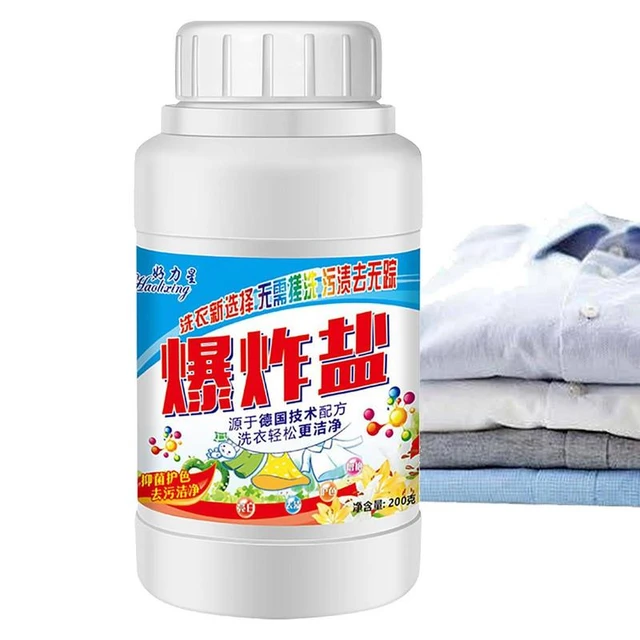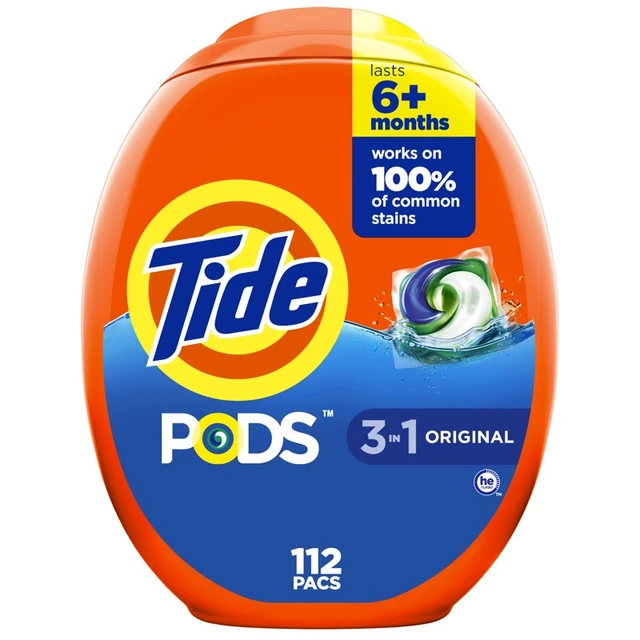 Introduction:
Introduction:
In moments of urgency or scarcity, you may have wondered if shampoo can be used as a substitute for laundry detergent. Shampoo and laundry detergent are both cleaning agents, and it may seem tempting to repurpose shampoo in a laundry emergency. In this comprehensive guide, we will debunk the myth and explore the key differences between shampoo and laundry detergent. By understanding these distinctions, you can make informed decisions about the proper use of cleaning products and ensure the best results for your laundry.
 Here are some common ingredients found in laundry detergents:
Here are some common ingredients found in laundry detergents:
Laundry detergent contains a combination of various ingredients that work together to clean and remove stains from clothes. Here are some common ingredients found in laundry detergents:
Surfactants:
Surfactants are the primary cleaning agents in laundry detergents. They help to loosen dirt and grease from fabrics and allow them to be rinsed away. Examples of surfactants used in laundry detergent include alkylbenzene sulfonate, alcohol ethoxylates, and soap.
Enzymes:
Are biological molecules that break down specific types of stains, such as protein-based stains (blood, grass). Enzymes, like protease, amylase, and lipase, can help to pre-treat and remove tough stains more effectively.
Builders:
Such as sodium carbonate and sodium citrate, enhance the cleaning efficiency of the detergents. Builders help to soften water by reducing mineral ions that can interfere with the cleaning process, resulting in better overall performance.
Bleach and Optical Brighteners:
Some laundry detergents contain bleach or bleach alternatives to help remove tough stains and brighten white fabrics. Optical brighteners, such as stilbene derivatives, are often added to enhance the whiteness and brightness of clothes, particularly in white and light-colored garments.
Fragrance:
Fragrances are added to laundry detergents to provide a pleasant scent to freshly washed clothes. Fragrance can be in the form of natural or synthetic chemicals and is often a personal preference for consumers.
Stabilizers and Chelating Agents:
Stabilizers, such as sodium sulfate, help maintain the stability and shelf life of laundry detergent formulas. Chelating agents, like ethylenediaminetetraacetic acid (EDTA), are added to bind and deactivate trace minerals in the water that can reduce the effectiveness of surfactants.
Fillers and Anti-redeposition Agents:
Fillers like sodium sulfate are sometimes added to laundry detergents to help control costs and improve product performance. Anti-redeposition agents, such as carboxymethyl cellulose (CMC), prevent soil and stains from reattaching to clothes during the wash cycle.
It’s important to note that specific laundry detergent formulations can vary among brands and types. Always refer to the product packaging and labeling for detailed information about the ingredients in a particular laundry detergent.
Understanding Shampoo and Laundry Detergent
Differences in Formulation:
Shampoo is designed specifically for cleansing the hair and scalp, while laundry detergent is formulated for cleaning clothing and fabrics.
The composition and ingredients in each product are uniquely tailored to their intended purposes.
Cleaning Mechanisms:
Shampoo primarily targets oils, dirt, and product buildup found in hair and on the scalp.
Laundry detergent, on the other hand, tackles a broader range of stains and soils commonly found on clothing, including grease, food, and bodily fluids.
 Key Differences in Ingredients
Key Differences in Ingredients
Surfactants:
Surfactants are crucial ingredients that facilitate the removal of dirt and oils from surfaces.
Shampoo and laundry detergent contain different types of surfactants, specifically formulated for their respective applications.
pH Levels:
Shampoo is designed to maintain a specific pH balance suitable for the hair and scalp.
Laundry detergent, on the other hand, typically has a higher pH level to effectively remove stains and soils from fabrics.
Enzymes and Bleaching Agents:
Laundry detergents often contain enzymes and bleaching agents to break down tough stains and brighten fabrics.
Shampoos generally do not contain these ingredients as they are unnecessary for hair cleansing.
Effectiveness and Risks
Cleaning Efficiency:
Shampoo may be able to remove some surface dirt and light stains from clothing in a pinch.
However, its cleaning efficiency is significantly lower compared to specialized laundry detergents.
Residue and Buildup:
Shampoo may leave residue and build-up on fabrics when used as a substitute for laundry detergent.
These residues can affect the texture, appearance, and cleanliness of clothing.
Potential Damage and Color Fading:
Shampoo may contain ingredients that aren’t fabric-friendly, leading to potential damage or color fading.
Laundry detergents are formulated to minimize these risks and maintain fabric quality.
 Alternative Options
Alternative Options
Gentle Detergents:
If you are concerned about the harshness of traditional laundry detergent, consider using gentle, eco-friendly, or hypoallergenic options to prevent allergies.
These detergents are formulated to be less abrasive on fabrics and less damaging to the environment.
If you prefer a DIY approach, there are numerous recipes available for making your own laundry detergents using natural ingredients.
These homemade options often utilize ingredients such as soap flakes, washing soda, and essential oils.
Specialty Stain Removers:
In cases where you need to target specific stains, consider using specialty stain removers designed for the type of stain you are dealing with.
These products can be effective at treating and removing stubborn stains before laundering.
Some popular trends in the laundry detergent industry include:
Environmentally-friendly Formulations:
There is an increasing demand for laundry detergents that are eco-friendly and sustainable. Consumers are seeking products that have reduced environmental impact, such as biodegradable or plant-based ingredients, and are free from harsh chemicals like phosphates and optical brighteners.
Concentrated and Compact Products:
Concentrated laundry detergents are gaining popularity due to their smaller packaging and reduced carbon footprint in terms of transportation and storage. These products require less water and packaging, leading to lower waste and environmental impact.
Allergy-Friendly and Hypoallergenic Options:
Many consumers are now searching for laundry detergents that are hypoallergenic and suitable for individuals with sensitive skin or allergies. This trend has led to the development of detergents that are free from dyes, fragrances, and other potential irritants.
Multifunctional and Specialty Products:
Consumers now seek laundry detergents that offer additional benefits beyond just cleaning. This includes detergents with fabric softening properties, stain-fighting capabilities, or specialty formulations designed for specific fabrics or garment types, such as delicates or active wear.
Packaging Innovations:
Sustainable and recyclable packaging options, such as cardboard boxes or refillable containers, are gaining popularity as consumers become more conscious of reducing plastic waste. Some brands are also offering packaging made from recycled materials.
Digital and Subscription Services:
Online platforms and subscription-based services are becoming more prevalent in the laundry detergent market. Consumers can conveniently order detergent refills or subscribe to regular deliveries, reducing the need for physical store purchases and promoting convenience and efficiency.
Scent Varieties and Personalization:
Laundry detergents are now available in a wide range of scent options, allowing consumers to customize the fragrance of their freshly washed clothes. This trend caters to individual preferences and enhances the overall laundry experience.
 Conclusion:
Conclusion:
While shampoo and laundry detergent may share some similarities as cleaning agents, they are formulated for distinct purposes. It is not recommended to use shampoo as a substitute for laundry detergent due to the differences in formulation, ingredients, and cleaning efficiency. Shampoo may not effectively remove stains, can leave residues on fabrics, and may even cause damage or color fading. Instead, consider using gentle detergents, exploring homemade options, or utilizing specialty stain removers to ensure the best results for your laundry. By understanding the distinctions between cleaning products and making informed choices, you can maintain the cleanliness, appearance, and longevity of your clothing.
